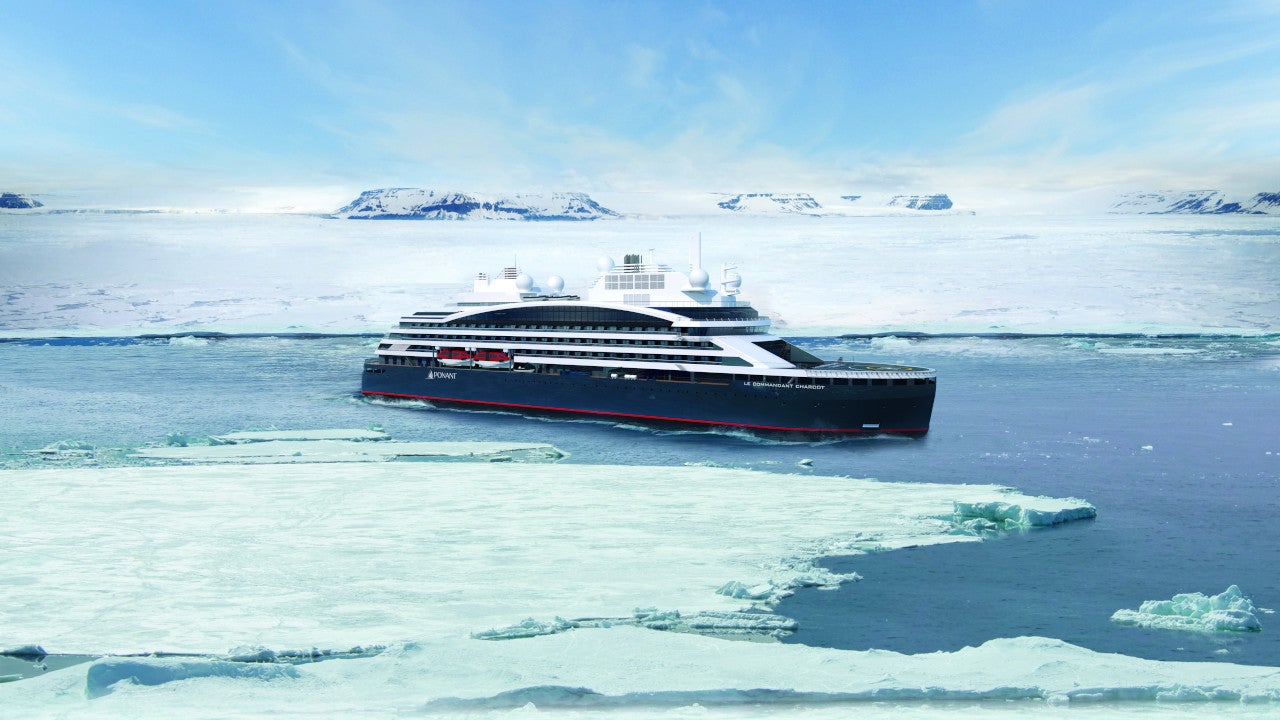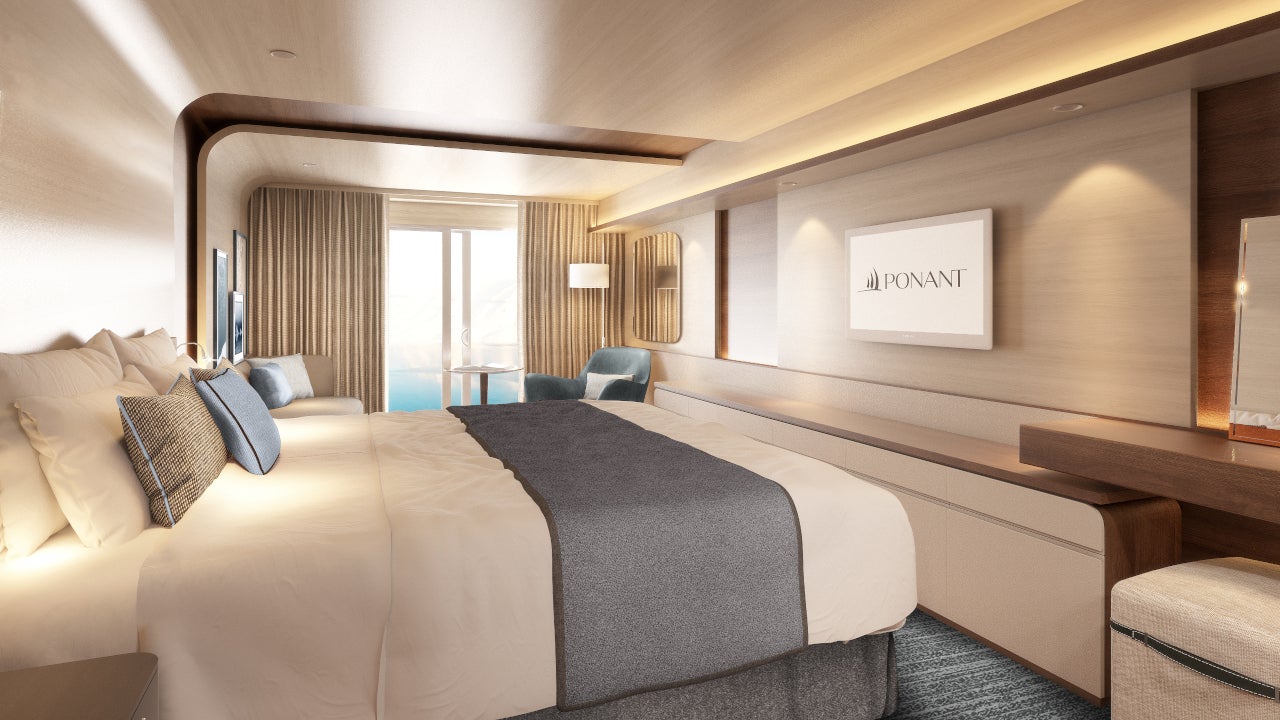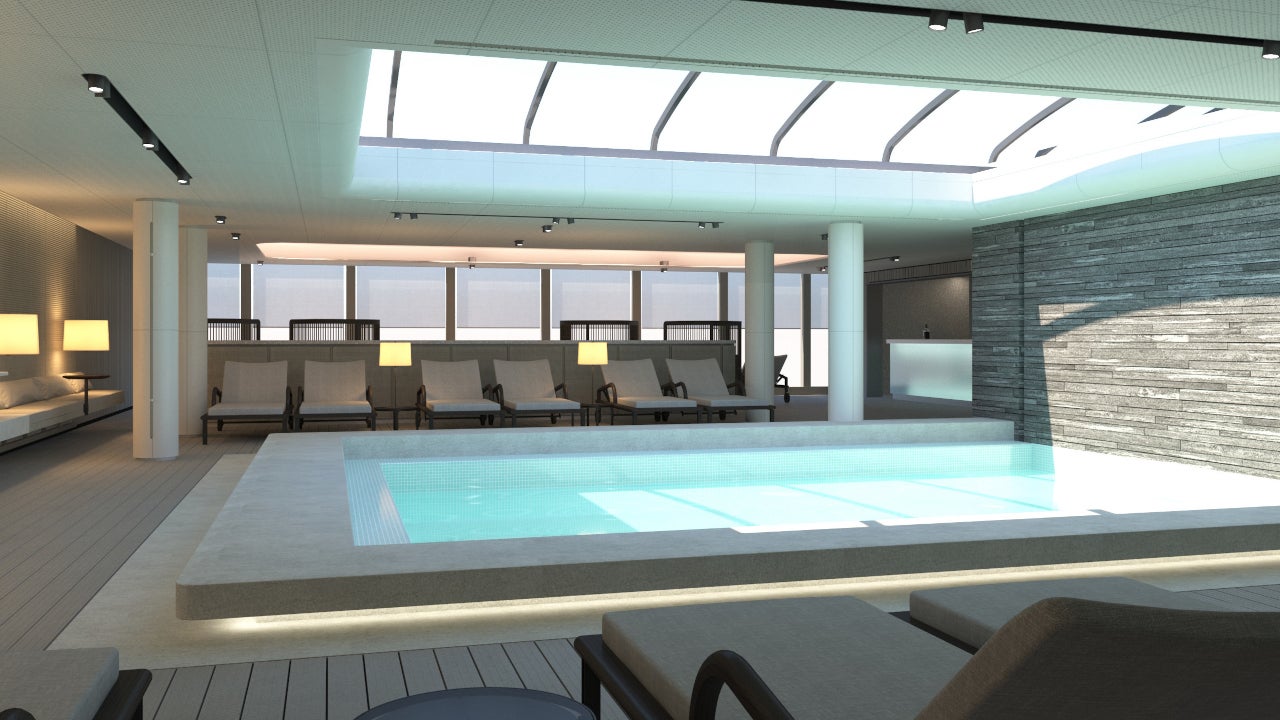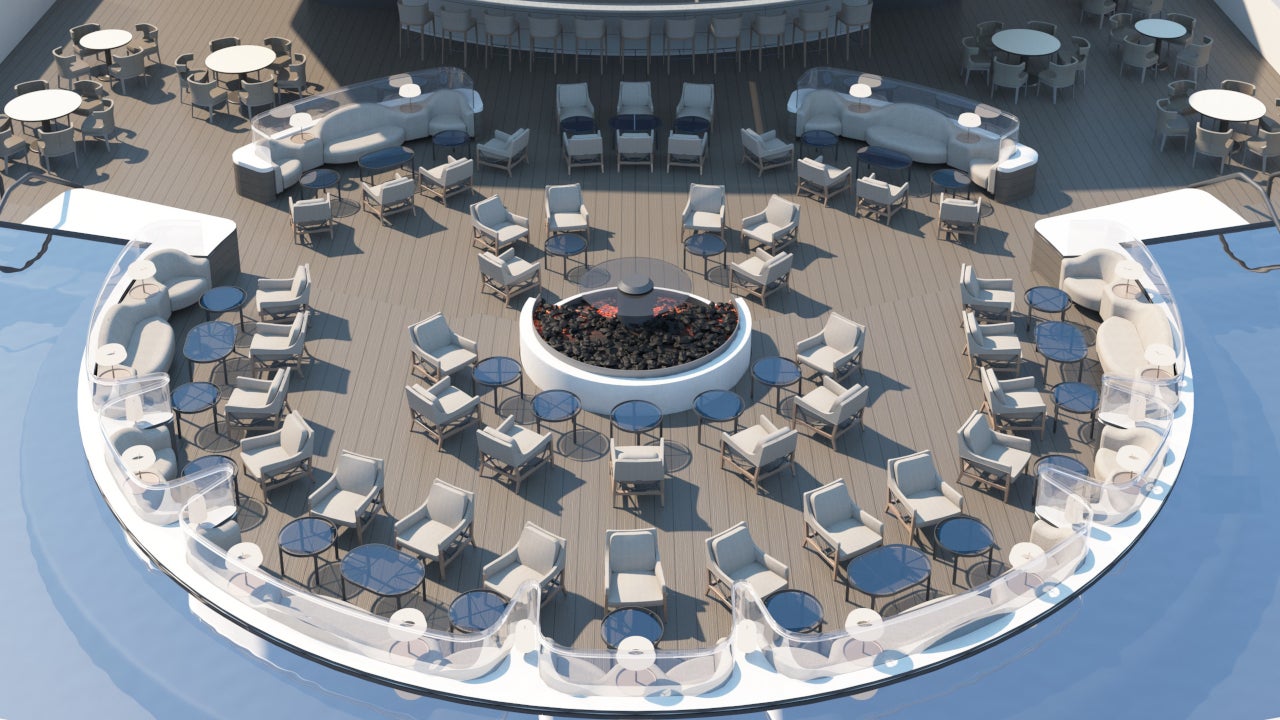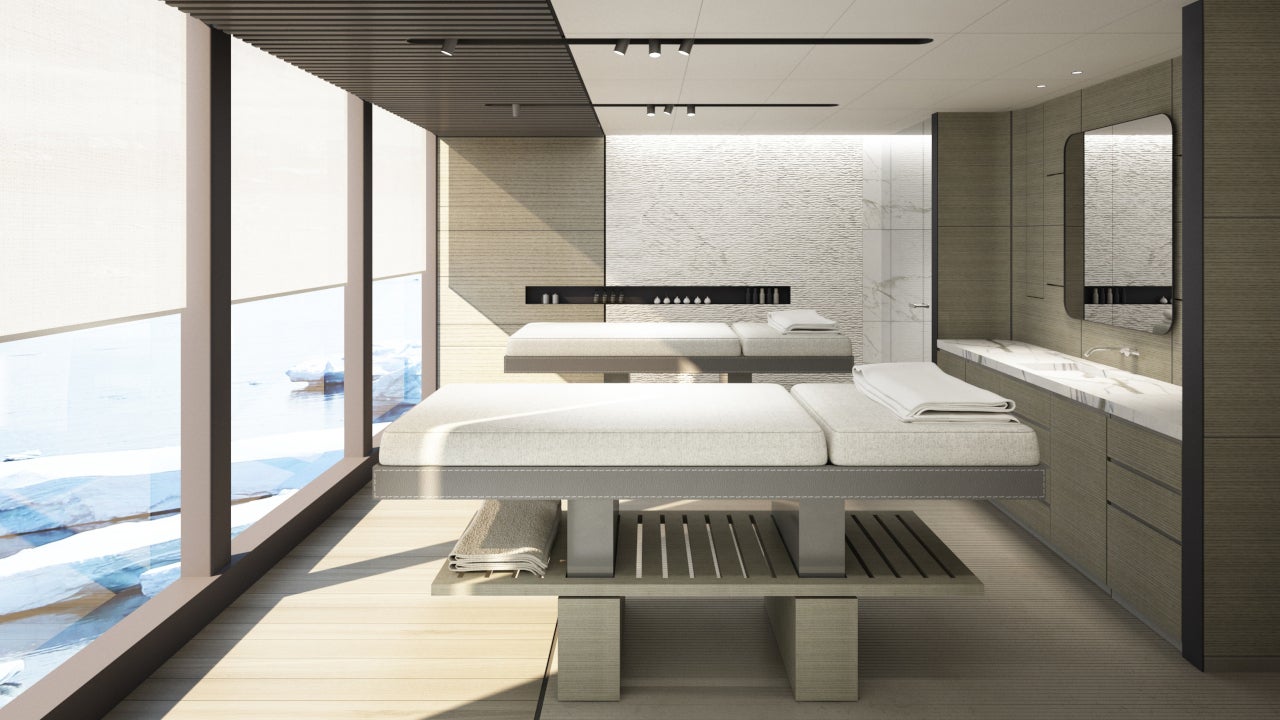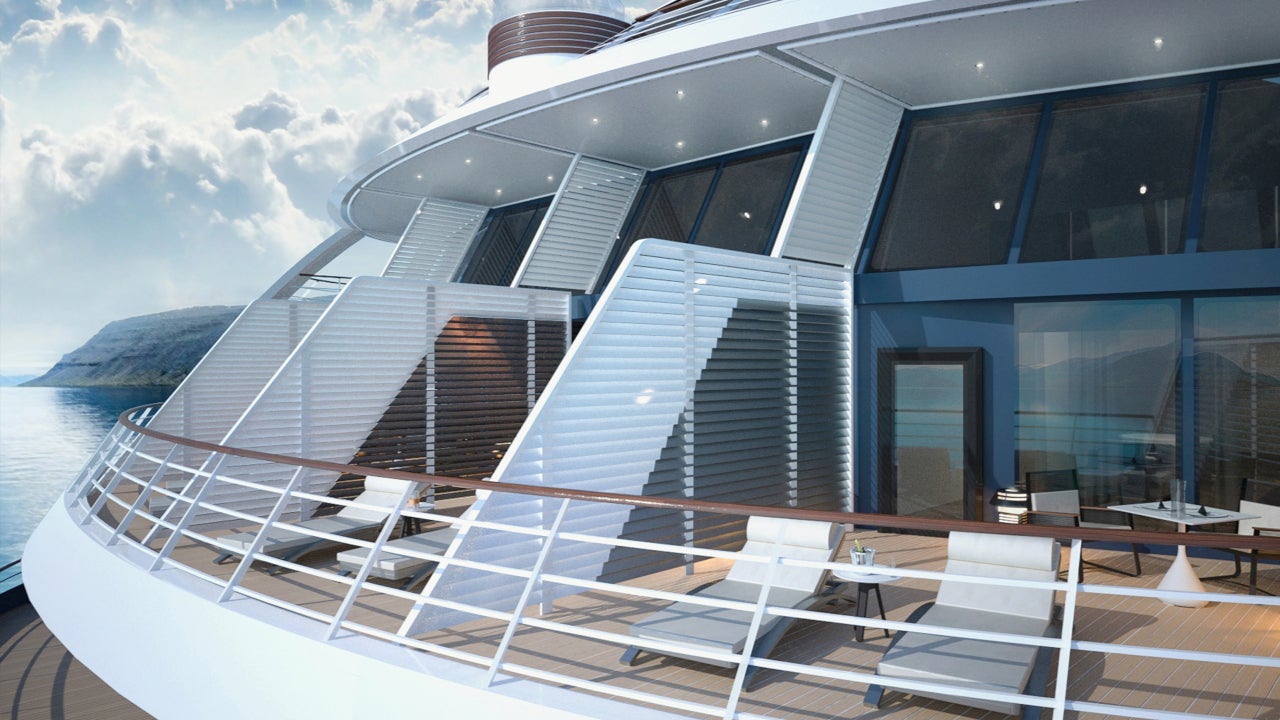Le Commandant Charcot is a new hybrid-electric polar exploration vessel under construction for Ponant, a French cruise ship operator.
The polar ship is being outfitted by Vard Søviknes Shipyard in Norway and is named after the 19th-century polar explorer Jean-Baptiste Charcot. It will have the capability of reaching Arctic areas in all seasons.
The keel-laying ceremony of the vessel was held at Vard Tulcea Shipyard in Romania in December 2018. Its hull and superstructure were built at Tulcea shipyard, while the polar vessel was towed to Søviknes Shipyard for the final stage of construction in April 2020.
Le Commandant Charcot arrived at Saint-Nazaire for propulsion system integration in July 2020. The cruise ship will be delivered from the Søviknes shipyard in December 2021.
Le Commandant Charcot design and features
Designed with the latest green technologies, Le Commandant-Charcot will serve as a latest-generation PC2 polar class vessel. The polar expedition ship will have a length of 149.9m, beam of 28m and draft of 10m. The gross tonnage of the vessel will be nearly 31,757t.
The ship can move through 2.5m-thick ice floes and will sail through sea ice compression ridges of more than 10m. It will have the capacity to accommodate 270 passengers and 190 crew members.
The polar exploration vessel can also be used for scientific purposes as it will be fitted with infrastructure such as laboratories and staterooms. It will offer a platform for observation, research as well as analysis of water, air and ice in polar regions.
The vessel will offer a range of activities to its passengers such as kayaking, hot air balloon, dog sled, ice fishing, hovercraft, polar diving, hiking and snowmobiles.
The exploration ship will also be fitted with fuel gas supply system and several other digital tools including Wärtsilä Nacos Platinum navigation equipment and Wärtsilä Eniram proactive energy management system.
Deck details
The Le Commandant Charcot polar cruise ship will feature a total of nine decks, of which five will be passenger decks. Deck three will have the 270m² reception area which will offer onboard administrative services to passengers.
Deck five will house the theatre with a seating capacity of 270 along with advanced audio and lighting technology. It will also feature a 313m² main lounge, a 24m² cigar lounge and a tea room and bar.
Deck nine will feature an indoor swimming pool, blue lagoon baths and an exterior bar equipped with armchairs and sofas.
The wellness space will offer a range of services to passengers including massage and treatment cubicles, beauty care cubicle, hair salon, nail salon, sauna and snow room and gym.
The 262m² observatory lounge and bar will allow the guests to peacefully enjoy the views of ice surrounding the ship.
Accommodation and dining facilities
The polar expedition ship will have a total of 135 staterooms with balconies, including 68 suites with their own private terraces. The ship will mainly house six different categories of accommodation units including suite duplex, prestige stateroom, prestige suite, privilege stateroom, owner’s suite, and privilege suite.
The owner’s suite with private terrace and jacuzzi will spread over 115m² space on deck eight. The rear section of decks six and seven will house four 94m² split-level suites.
All the staterooms will feature king-size beds, minibar, TV, dressing table, bath robes, hairdryer, direct line telephone and WiFi access.
Le Commandant-Charcot polar ship will feature two restaurants with the primary venue being the Gastronomic restaurant.
The 484m² gourmet restaurant will occupy deck five and has the capacity to accommodate all the passengers in single service. It will mainly offer French and international cuisine and feature a fine wine cellar.
The Blue Lagoon restaurant on deck nine will be spread over 320m² area and will have an indoor capacity of 142 and outdoor capacity of 62.
Le Commandant Charcot propulsion and performance
The polar expedition vessel will be equipped with liquefied natural gas (LNG) powered dual-fuel engines including four 14-cylinder and two 10-cylinder Wärtsilä 31DF units. The engines will generate a maximum power output of 42MW.
The propulsion system will also include two ABB Azipod electric propulsion units developing a total power of 34MW. The vessel will be able to cruise at a speed of 15k.
Contractors involved
The design and decoration of the vessel are carried out by the studio of Jean-Philippe Nuel, and Wilmotte & Associés.
Eiffage Energie Systemes-Clemessy Services was engaged to install the propulsion systems of the vessel.

